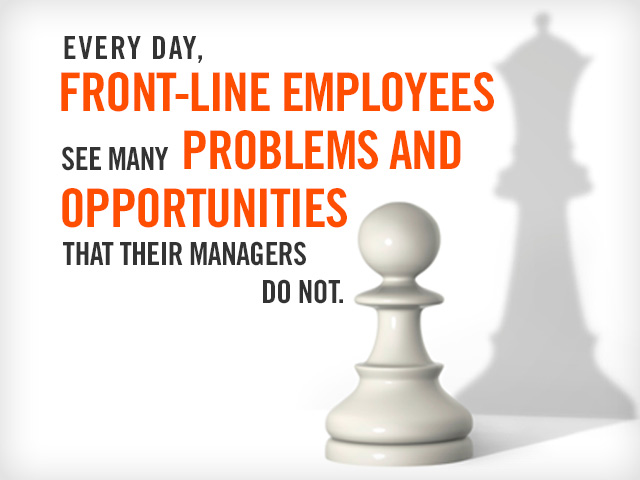Recently, just as the senior management team at a midsize Midwestern company was nearing a decision to set up and launch a high-performance idea system, the CEO expressed some last minute second thoughts.
The company had contacted me because its idea system (an online suggestion-box process) was getting less than an idea per person per year. The manager of continuous improvement knew the company could do much better, and had been urging the leadership team to make changes.
With the company’s current change capacity, the CEO pointed out, it couldn’t even keep up with the ideas already coming in, many of which never get addressed, or are simply rejected. What was going to happen when ten times as many ideas came in? The burden would fall on managers to get them done, and his managers were already overloaded.
I found myself talking with this team about what I call the “Continuous Improvement (CI) Equation.” It is a misconception, and a common one, that CI will increase everyone’s workload, particularly the workload of managers. But If you do it right, the ROI time- and effort-wise will be well worth it – visibly so, and right from the beginning. And the most grateful people will be the precisely those front-line managers and supervisors the CEO was worried about.
For example, at a large Massachusetts hospital, the first idea that came into the HR department was to change the hospital’s job application form. The section where applicants were required to certify that they had never been convicted of a felony was a special box similar to those marked “For Official Use Only”, so many applicants overlooked it. Before the application could be processed, the HR staff had to contact the applicant and make an appointment for him to come back in and sign this section of the form. This took an average of 30 minutes for the roughly 25 unsigned applications per week. The HR Director commented, “I have been managing the department for eleven years and had no idea we were wasting so much time on this problem.” The idea saved this six-person department 12.5 hours per week, an average of two hours per person, more than enough time to work on ideas.
But for the CI equation to work, you do need to use the right approach and processes. You can easily fill the air with CI activities – like that Midwestern company’s suggestion box – that don’t produce the results at the rate necessary to justify the time and effort you put into them.
It was good that the CEO raised his concerns, as it served to sharpen his team’s thinking, and would keep them focused on what was important as they designed and launched their high-performing idea system.
Think about your own organization’s CI equation. If you aren’t clearly seeing that the time and effort saved by CI more than pays the time and effort put into it, then you need to rethink your CI processes, and fast.


